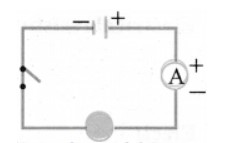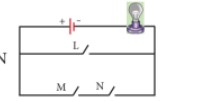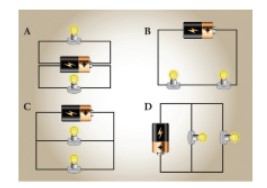Samacheer Kalvi 7th Science Term 2 Unit 2 Book Back Question and Answers:
Samacheer Kalvi 7th Standard Science Book Back 1 Mark and 2 Mark Question & Answers uploaded online and available PDF for free download. Class 7th New Syllabus Science Term II book back question & answer solutions guide available below for English Medium. Class Seventh Std Science English Medium Term 2 Unit 2 Electricity book back answers given below. Students looking for class 7th Term II Unit 2 Questions and Answers can check below.
We also provide class 7th other units Book Back One and Two Mark Solutions Guide on our site. Students looking for a new syllabus 7th standard Science Term 2 Unit 2 Electricity Book Back Questions with Answer PDF:
For all three-term of 7th standard Science Book Back Answers English Medium – Samacheer kalvi 7th Science Book Back Answers
Samacheer Kalvi 7th Science Book Back Term 2 Unit 2 Solution Guide PDF:
TN State Board Class 7th Science Subject Term 2 Unit 2 one mark and two mark solutions guide PDF available below.
Science – Term 2
Unit 2 Electricity
I. Choose the correct answer:
1. In the circuit diagram below, 10 units of electric charge move past point x every second What is the current in the circuit ________.

(a) 10 A
(b) 1 A
(c) 10 V
(d) 1 V
Answer: (a) 10 A
2. In the circuit shown, which switches (L, M, or N) must be closed to light up the

(a) switch L only
(b) switch M only
(c) Switch M and N only
(d) either switch L or switches M and N
Answer: (d) either switch L or switches M and N
3. Small amounts of electrical current are measured in milliamperes (mA). How many milliamperes are there in 0.25 A?
(a) 2.5 mA
(b) 25 mA
(c) 250 mA
(d) 2500 mA
Answer: (c) 250 mA
4. which of the following circuits are the bulb connected in series?

Answer: (B)
II. Fill in the blanks:
- The direction of conventional current is ____________ to electron flow.
- One unit of a coulomb is a charge of approximately ____________ protons or electrons.
- ____________ is used to measure the electric current.
- In conducting materials electrons are ____________
- S.I. unit of Electrical conductivity of a conductor is ____________
Answers:
- Opposite
- 6.242×10
- Ammeter
- Loosely
- siemens/meters
III. True or false – If false give the correct answer:
1. Electron flow is in the same direction as conventional current flow.
Answer: False.
Electron flow is in the opposite direction to conventional current flow.
2. The fuse wire does not melt whenever there is an overload in the wiring.
Answer: False.
The fuse wire melts whenever there is an overload in the wiring.
3. In a parallel circuit, the electric components are divided into branches.
Answer: True.
4. The representation of the electric current is A.
Answer: False. The representation of the electric current is I.
5. The electrical conductivity of the semiconductor is in between a conductor and an insulator.
Answer: True.
VI. Match the following :
- Cell – used to open or close a circuit
- Switch – safety device used in an electric circuit
- Circuit – A complete path for the flow of an electric current
- Miniature circuit Breaker- Reset by hand, the circuit becomes complete once again
- Fuse – A device that converts chemical energy into electrical energy
Answer:
- Cell – A device that converts chemical energy into electrical energy
- Switch – used to open or close a circuit
- Circuit – A complete path for the flow of an electric current
- Miniature circuit Breaker – Reset by hand, the circuit becomes complete once again
- Fuse – safety device used in an electric circuit
V.Analogy:
1. Water : pipe : : Electric current: ______.
Answer: wire
2. Copper : conductor : : Wood : ________.
Answer: insulator
3. Length : meter scale : : Current : ________.
Answer: ammeter
4. milli ampere: micro ampere : : 10 – 3A: _______.
Answer: 10-6A
VI. Assertion and Reason :
1. Assertion (A): Copper1 is used to make electric wires.
Reason (R): Copper has very low electrical resistance.
Option:
A. Both A and R are true and R is the correct explanation of A.
B. Both A and R are true but R is NOT the correct explanation of A.
C. A is true but R is false.
D. A is false but R is true.
E. Both A and R are false.
Answer: A. Both A and R are true and R is the correct explanation of A
2. Assertion (A): Insulators do not allow the flow of current through themselves.
Reason (R): They have no free-charge carriers.
A. If both A and R are true and the R is the correct explanation of A.
B. If both A and R are true but R is not a correct explanation of A.
C. If A is true and R is false.
D. If both A and R are false.
Answer: A. If both A and R are true and the R is the correct explanation of A
VII. Very short answer:
1. What is the speed of the electric current?
Answer:
Current travels at the speed of 1/100th times the speed of light 0.0002 m/s.
2. What is the S.I. unit of electrical conductivity?
Answer:
The SI unit of electrical conductivity is Siemens/meters (s/m).
3. Name the device used to generate electricity.
Answer: Electric cell.
4. Define fuse.
Answer:
An electric fuse is a safety device that is used in household wiring and in many appliances.
5. Name some devices that run using the heat effect of electric current
Answer:
Electric bulb, geyser, Iron box.
6. Name a few insulators.
Answer:
Rubber, wood, plastic, glass.
7. What is a battery?
Answer:
Batteries are a collection of one or more cells whose chemical reactions create a flow of electrons in a circuit.
VIII. Short Answer:
1. Define an electric current.
Answer:
An electric current is measured by the amount of electric charge moving per unit time at any point in the circuit. The conventional symbol for current is I.
2. Differentiate parallel and serial circuits.
Answer:
Parallel circuits:
- It is connected by branches.
- Voltage remains the same across each component of the circuit
- Each bulb is fully powered.
- All bulbs stay lit if one goes out.
Serial circuits:
- It consists of a single-loop connection.
- The current remains the same in all parts of the circuit.
- All the bulbs share power.
- All bulbs go out if one goes out.
3. Define electrical conductivity.
Answer:
Electrical conductivity or specific conductance is the measure of a material’s ability to conduct an electric current.
Other Important Links for the 7th Science Book Back Solution Guide:
Tamil Nadu Class 7th Standard Book Back Guide PDF, Click the link – 7th Book Back Questions & Answers PDF
For all three-term of 7th standard Science Book Back Answers English Medium – Samacheer kalvi 7th Science Book Back Answers
